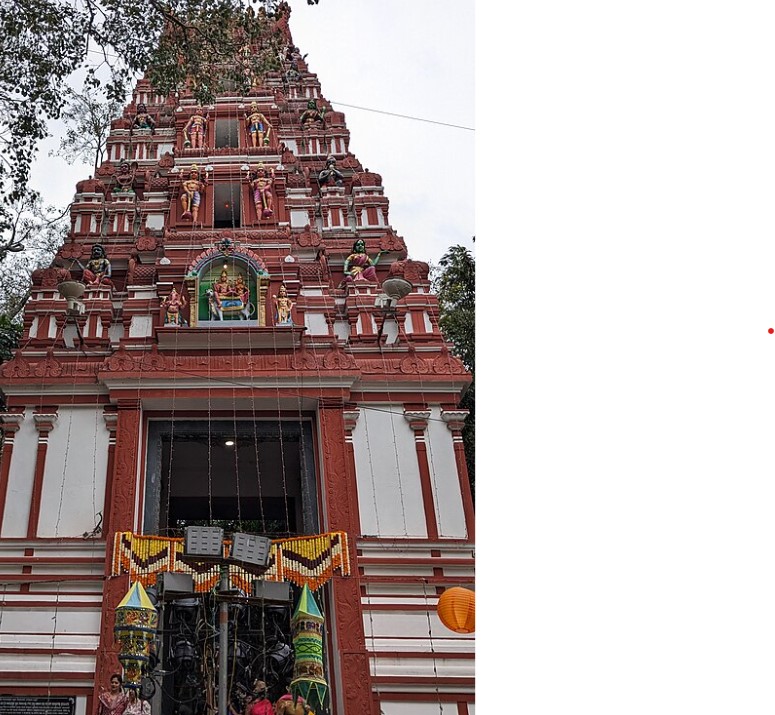Malleshwaram, Bangalore, now a thriving urban space, has existed since ancient times. Let us delve into the history, culture, and other key factors of this northwest neighbourhood, one of the zones of the BBMP in Bangalore.

History of Malleshwaram, Bangalore
Malleshwaram was originally called Mallapura, as per the Ekoji Inscription of Malleshwaram, dated 1669 CE, found in the popular Kadu Malleshwara temple in Bangalore. According to popular belief, Ekoji, the half-brother of Chhatrapati Shivaji, developed the famous Kadu Malleshwara temple and donated the village of Medaraninganahalli for its upkeep. Hence, the existence of the locality as Mallapura dates back 250 years prior to its evolution as a developed area. The word ‘Kadu’ means ‘forest’, which indicates the fact that the surrounding area of the temple could have been wooded in those days.
The development of Malleshwaram, Bangalore as a result of the days of plague in 1898
Malleshwaram is a planned residential area, an extension of Bangalore that developed after the Bubonic Plague struck the city in 1898. When plague was rampant in the city, people were temporarily relocated to tents in Malleshwaram for treatment and boarding. Later on, those people stayed on and made it their home. The then Plague Commissioner of Mysore State, VP Madhava Rao, suggested the idea of a new township to decongest the densely populated Pete area. As a result, the necessary land was acquired in the northern part of the old city, encompassing villages such as Ranganathapalya, Jakkasandra, and Andandattarapalya. Thus, the land procured for the purpose was around 291 acres.
Standish Lee, an Indian-born Scottish engineer, and VP Madhava Rao were instrumental in planning and developing Malleshwaram, Bangalore. They came up with a gridiron layout, and the design consisted of organised roads, sanitation infrastructure, which also included enough green public spaces. Then plots were developed in the neighbourhood with adequate ventilation and open spaces, well-planned market spaces, and transportation hubs. The area consisted of eight blocks to house people from diverse social and religious backgrounds. It soon became a model for the development of other housing extensions in Bangalore.
Malleshwaram, Bangalore, the hub of culture, education and sports
Malleshwaram, Bangalore, is renowned for its rich cultural and spiritual heritage. It houses the Kadu Malleshwara temple, Dakshinamukha Nandi Tirtha Kalyani Kshetra, Shri Chitrapur Math, Gangamma Devi Temple, Sri Lakshmi Narasimha Temple, Sri Venugopala Swamy Temple, Sri Sai Mandali Malleshwaram, Christ the King Church, and St. Peter’s Pontifical Seminary. The locality has been a thriving ground for producing popular figures in classical dance, Carnatic music, and literature. Seva Sadan, Gandhi Sahitya Sangha, and the Chowdiah Memorial Hall in Malleshwaram promote culture and art.
The locality has several noteworthy educational institutions, including the Malleswaram Ladies Association (MLA), Mysore Education Society (MES), Maharani Ammani College, Cluny Convent, and Nirmala Rani.
Furthermore, Malleshwaram, Bangalore, is also a sports hub, owing to its efficient urban planning, which includes open spaces, community infrastructure, and accessibility. The locality is home to renowned sporting spaces, including the Gymkhana, Friends Union Cricket Club, Beagles Basketball Club, Canara Union, and Malleswaram Grounds.
Dignitaries from Malleshwaram, Bangalore
Malleshwaram, Bangalore, has been home to many prominent individuals. H. V. Nanjundaiah, the first Vice-Chancellor of Mysore University, was one of the early residents of Malleshwaram. C.V. Raman, the Nobel laureate; scientist Krishnaswamy Kasturirangan; the famous Carnatic musician Doraiswamy Iyengar; badminton world champion Prakash Padukone; his daughter, actress Deepika Padukone; and other noteworthy artists from the film industry, such as Saroja Devi, Ananth Nag, and Jaggesh, have lived in Malleshwaram.
Places of interest in Malleshwaram, Bangalore
Today’s Malleshwaram, Bangalore, boasts numerous places of interest for both tourists and city residents. The prominent ones are
- The Kadu Malleshwara Temple
- Orion Mall
- Mantri Square Mall
- Bangalore Palace
- ISKCON Temple
- Sankey Tank.
Furthermore, some of the best old cafes are found in Malleshwaram. Heritage cafes, such as CTR Shri Sagar (established in the 1920s), Raghvendra Stores, Veena Stores, Janatha Hotel, New Krishna Bhavan, and Snehajeevi Gowdara Egg Rice Adda, are notable examples.
To conclude, Malleshwaram, Bangalore, has undergone significant evolution from its historical past to the present day modernity.
Also read
- Bored In Bangalore? Go For A Jungle Safari Near Bangalore Within 250 km
- Shrungagiri Shanmukha Temple, Bangalore – The Magnificent Hill Temple
- 10 Fun Places To Visit In Bangalore For Kids
- 6 Animal Petting Places In And Around Bangalore